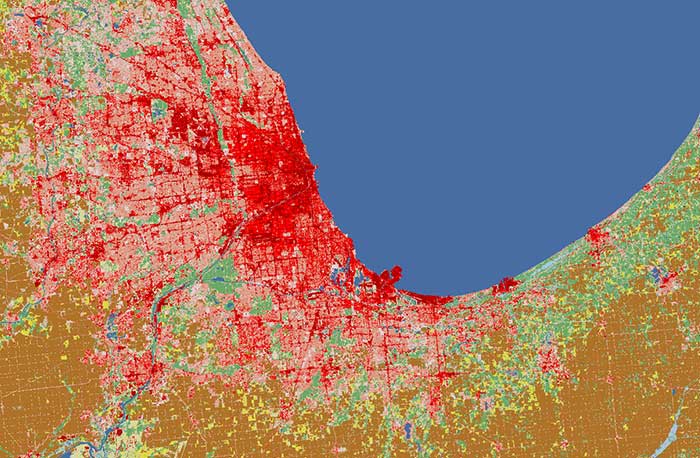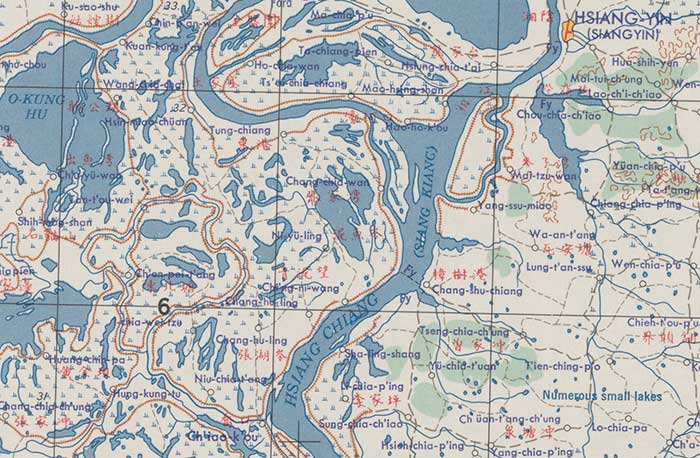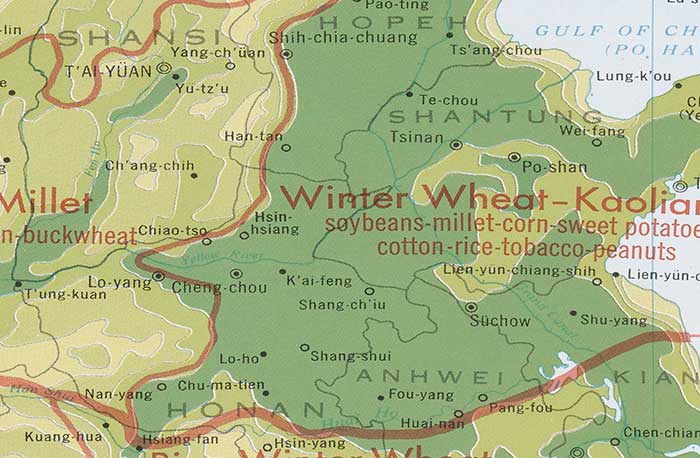View Metadata
Earthquakes, 1996
- Identification Information
- Data Quality Information
- Spatial Data Organization Information
- Spatial Reference Information
- Entity and Attribute Information
- Distribution Information
- Metadata Reference Information
- Identification Information
- Citation
- Originator
- Environmental Systems Research Institute (Redlands, Calif.)
- Publication Date
- 1996
- Title
- Earthquakes, 1996
- Geospatial Data Presentation Form
- vector digital data
- Series Information
- Series Name
- ArcAtlas
- Publication Information
- Publication Place
- Redlands, Calif.
- Publisher
- ESRI
- Online Linkage
- https://www1.columbia.edu/sec/acis/eds/dgate/studies/C1301/data/esri_1996_world_earthquakes.zip
- Abstract
- Earthquakes is a point theme repersenting earthquakes worldwide. Attribute information includes the magnitude, depth date and intensity of the earthquakes.
- Purpose
- For educational, non-commercial purposes. This dataset is appropriate for use in a GIS.
- Supplemental Information
- Earthquakes are caused by the release of energy in relatively small areas of the earth's crust or upper mantle. Powerful earthquakes are much more rare than weak ones. For example, earthquakes of magnitude 7.0 occur only one-tenth as often as the number of earthquakes of magnitude 6.0. Two different measurements are commonly used to describe the power of earthquakes: magnitude and intensity. Magnitude is measured on the Richter scale. It is calculated from the amplitude (side-to-side movement) of seismic waves measured at multiple locations, ideally about 100 kilometers away from an earthquake's focus. Seismographs are used to record the information about wave amplitude. The Richter scale is a logarithmic scale where each number has ten times the wave amplitude (and about 31.5 times the total energy release) of the previuos number. The magnitude of the most powerful recorded earthquakes is 8.7. Intensity measures the effects of an earthquake, especially the effects on people and structures. It is measured by observations of people witnessing the earthquake aswell as an assessment of damages afterward. Intensity is measured on the Mercalli scale, which ranges from 1 to 12. Intensity is influenced by such things as the strength of the earthquake, distance from the epicenter, the kind and density of structures in the local area, local geology, and the time of day. Intensity is valuable for estimating the strength of historical earthquakes which are known by written accounts and other evidence from long ago. However, intensity is not useful for describing earthquakes in uninhabited areas, such as beneath the ocean.
- Temporal Extent
- Currentness Reference
- publication date
- Time Instant
- 1996
- Bounding Box
- West
- -180
- East
- 180
- North
- 85
- South
- -85
- Theme Keyword
- geoscientificinformation
- Theme Keyword Thesaurus
- ISO 19115 Topic Categories
- Theme Keyword
- Earthquakes
- Theme Keyword Thesaurus
- None
- Place Keyword
- Earth
- Place Keyword Thesaurus
- Library of Congress Subject Headings
- Temporal Keyword
- 1996
- Temporal Keyword Thesaurus
- None
- Access Restrictions
- For current Columbia affiliates only.
- Use Restrictions
- For educational, non-commercial use only.
- Status
- Complete
- Maintenance and Update Frequency
- None planned
- Point of Contact
- Contact Organization
- ESRI
- Delivery Point
- 380 New York Street
- City
- Redlands
- State
- California
- Postal Code
- 92373-8100
- Country
- USA
- Contact Telephone
- 909-793-2853
- Contact Facsimile Telephone
- 909-793-5953
- Contact Electronic Mail Address
- info@esri.com
- Hours of Service
- 7:00 a.m.-5:30 p.m. Pacific time, MondayFriday
- Native Data Set Environment
- Microsoft Windows XP Version 5.1 (Build 2600) Service Pack 3; ESRI ArcCatalog 9.3.1.1850
- Data Quality Information
- Lineage
- Source
- Originator
- Shebalin, P. N.
- Publication Date
- 1987
- Title
- Kompiljacija katalogov zemletrjasenij kak zadacha klasterizacii s obucheniem
- Publication Information
- Publisher
- Doklady Akademii Nauk SSSR
- Type of Source Media
- paper
- Source
- Originator
- Bath, M.
- Publication Date
- 1966
- Title
- Earthquake Energy and Magnitude
- Series Information
- Series Name
- Physics Chem. Earth
- Issue Identification
- 6
- Type of Source Media
- paper
- Source
- Originator
- Bott M.
- Publication Date
- 1974
- Title
- Vnutrennee stroenie Zemli
- Publication Information
- Publication Place
- Moskva
- Publisher
- Mir
- Type of Source Media
- paper
- Source
- Publication Date
- 1990
- Title
- Global Hypocenter Database
- Publication Information
- Publisher
- NEIC/USGS
- Type of Source Media
- CD-ROM
- Spatial Data Organization Information
- Direct Spatial Reference Method
- Vector
- Point and Vector Object Information
- SDTS Terms Description
- SDTS Point and Vector Object Type
- Entity point
- Point and Vector Object Count
- 0
- Spatial Reference Information
- Horizontal Coordinate System Definition
- Planar
- Map Projection
- Map Projection Name
- Lambert Azimuthal Equal Area
- Lambert Azimuthal Equal Area
- Longitude of Projection Center
- 0.000000
- Latitude of Projection Center
- -90.000000
- False Easting
- 0.000000
- False Northing
- 0.000000
- Planar Coordinate Information
- Planar Coordinate Encoding Method
- coordinate pair
- Coordinate Representation
- Abscissa Resolution
- 0.000000
- Ordinate Resolution
- 0.000000
- Planar Distance Units
- meters
- Geodetic Model
- Horizontal Datum Name
- D_Sphere_ARC_INFO
- Ellipsoid Name
- Sphere_ARC_INFO
- Semi-major Axis
- 6370997.000000
- Denominator of Flattening Ratio
- infinity
- Entity and Attribute Information
- Entity Type
- Entity Type Label
- equake
- Attributes
- FID
- Internal feature number. (Sequential unique whole numbers that are automatically generated.)
- Definition Source
- ESRI
- Shape
- Feature geometry. (Coordinates defining the features.)
- Definition Source
- ESRI
- AREA
- PERIMETER
- ANEQLB_
- ANEQLB_ID
- MAGNITUDE
- DEPTH
- YEAR
- MONTH
- DAY
- INTENSITY
- POLYGONID
- SCALE
- ANGLE
- ANEQDD_
- ANEQDD_ID
- AFEQDD_
- AFEQDD_ID
- ASEQDD_
- ASEQDD_ID
- AUEQDD_
- AUEQDD_ID
- EUEQDD_
- EUEQDD_ID
- NAEQDD_
- NAEQDD_ID
- SAEQDD_
- SAEQDD_ID
- Distribution Information
- Format Name
- geopackage
- Distributor
- ESRI; ESRI International Distributors
- Name
- Metadata Reference Information
- Metadata Date
- 20090618
- Metadata Contact
- Contact Information
- Contact Organization Primary
- Contact Organization
- Research Data Services (RDS), Columbia University Libraries
- Contact Person
- GIS/Metadata Librarian
- Contact Address
- Address
- 420 W. 118th St. 215 IAB, MC 3301
- City
- New York
- State or Province
- NY
- Postal Code
- 10027
- Country
- USA
- Contact Voice Telephone
- (212) 854-6012
- Contact Electronic Mail Address
- data@library.columbia.edu
- Hours of Service
- 7:00 a.m.-5:30 p.m. Pacific time, Monday-Friday
- Metadata Standard Name
- FGDC Content Standards for Digital Geospatial Metadata
- Metadata Standard Version
- FGDC-STD-001-1998


